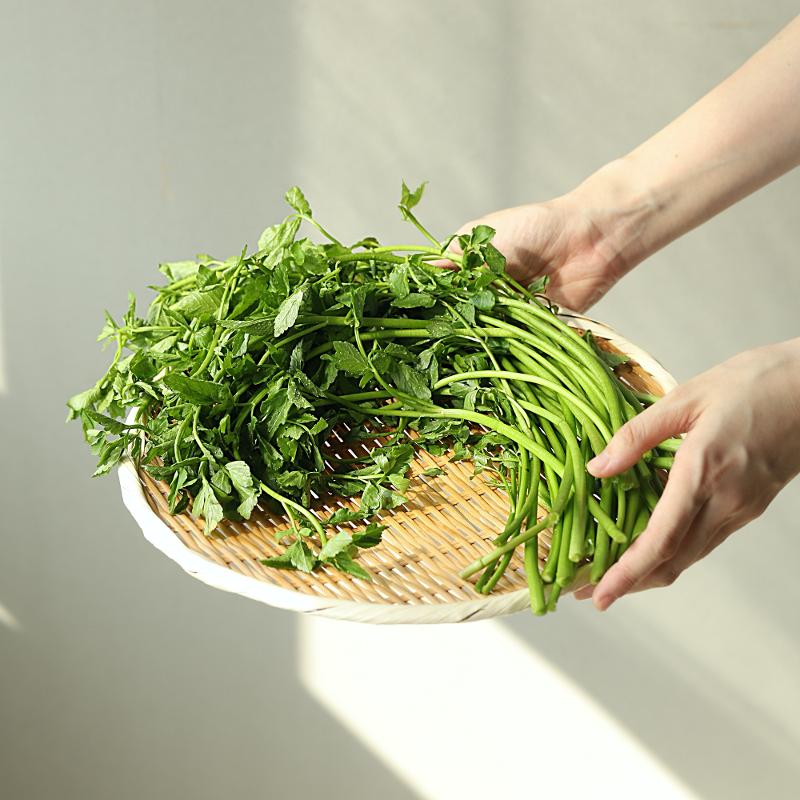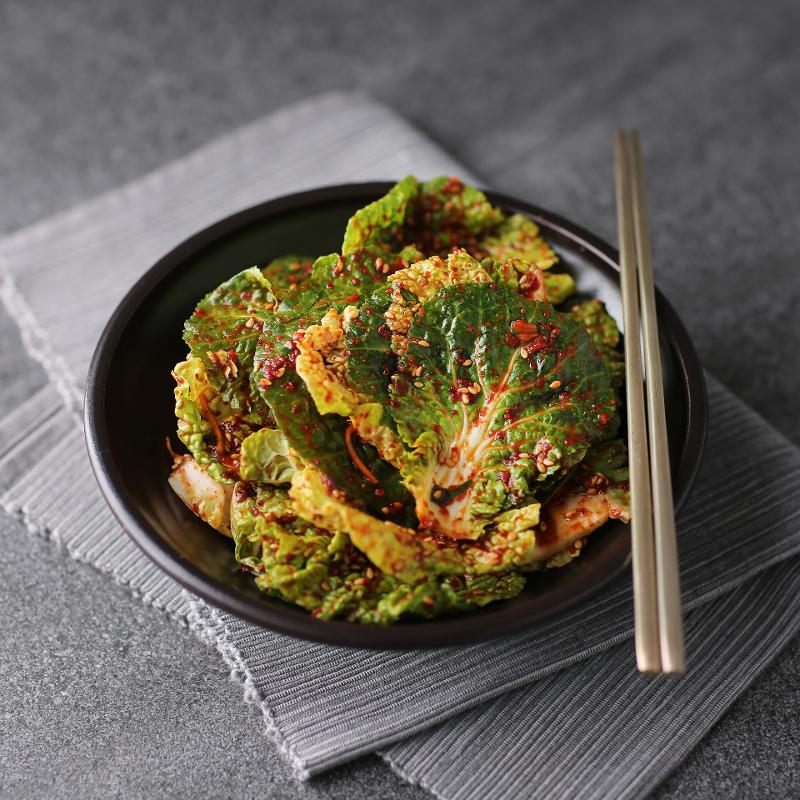Seasonal namul (seasoned herbs) like these are favorite vegetables to eat in spring in Korea. (W Table)
By Yoon Hee Young
"Minari grows well anywhere. Wonderful minari, wonderful!"
This is a line by Grandma Soon-ja (played by actor Youn Yuh-jung) in the critically acclaimed film "Minari" admiring minari (water parsley). Like the character, Koreans often consume the vegetable in spring.
Namul refers to boiled, stir-fried or seasoned herbs. Though consumed year-round in Korea, they are especially popular in spring, when sprouts grow and bring out vegetable freshness on the table.
Song Mi-yeon, a rehabilitation medicine professor at Kyung Hee University in Seoul, said, "Spring namul facilitates metabolism in the body and stimulates appetite," adding, "Eating spring namul is recommended for strengthening the immune system and adjusting to the change in season."
Namul has a variety of types and is easily cooked. Korea.net introduces three leading types of seasonal spring herbs and dishes.

Minari should be eaten raw or lightly boiled in water to maintain its nutrients. (W Table)
Minari
Minari (water parsley) is a seasonal herb with a unique aroma well known to Koreans that grows anywhere as Soon-ja said in the film. It has also long been used as medicine due to its strong aroma and detoxification properties.
Yoon Sook-ja, director of the Institute of Traditional Korean Food, said, "Minari is rich in nutrients such as iron and dietary fiber, which are good for the digestive system and prevent high blood pressure."
"When minari is exposed to fire, the nutrients can be destroyed, so blanching it in water or eating it raw is recommended."
Yoon also suggested minari muchim (seasoned water parsley).
1. Wash minari and other vegetables and chop them into small pieces.
2. Add gochugaru (red pepper flakes), gochujang (red pepper paste), soy sauce, cooking wine, sugar, minced garlic and vinegar to make the seasoning.
3. Mix the seasoning with the chopped vegetables.
Naengi muchim (seasoned shepherd's purse) offers a special aroma and bitter flavor. (W Table)
Naengi
Naengi (shepherd's purse) is the first vegetable to signal the departure of winter and the arrival of spring. Usually grown in fields or farms, this vegetable is usually harvested in early spring. With a unique aroma and slightly bitter flavor, naengi is one of the most common ingredients found on a Korean dining table in spring. The herb is eaten whole from roots to leaves.
Professor Song said, "Naengi is good for those with weak digestive systems and helps cleanse the blood."
Naengi is used in various dishes including naengi jeon (shepherd's purse pancake) and naengi doenjang jjigae (soybean paste stew with shepherd's purse). The most recommended of these naengi-using concotions is naengi muchim (seasoned shepherd's purse) since it is easy to cook and delivers the fragrant aroma of spring.
1. Wash naengi and trim it.
2. Make a seasoning with gochugaru (red pepper flakes), vinegar, sugar, garlic, aekjeot (fish sauce) and sesame.
3. Mix the seasoning with naengi.

The crunchy bomdong geotjeori (unfermented kimchi with spring cabbage) symbolizes the the arrival of spring. (Lime Banchan)
Bomdong
Bomdong (spring cabbage) is sown in an open field in winter and harvested in spring. Slightly thicker than a normal cabbage but with a softer texture and full of amino acid, the cabbage has a rich aroma and sweet flavor with a bit of nuttiness when chewing. Geotjeori (unfermented kimchi mixed with condiment) is famous for its crunchy texture. Eating the fresh bomdong geotjeori (unfermented kimchi with spring cabbage) means the arrival of spring.
Yoon said, "Bomdong is rich in nutrients that relieve fatigue and has an abundance of minerals, containing more than double the vitamin C of an orange."
1. Tear the bomdong off and cut it into bite-size pieces.
2. Make the paste with gochugaru (red pepper flakes), soy sauce, ginger, minced garlic and fish sauce.
3. Mix the paste with the cabbage. Add dallae (wild chives) or cucumber as desired.
hyyoon@korea.kr